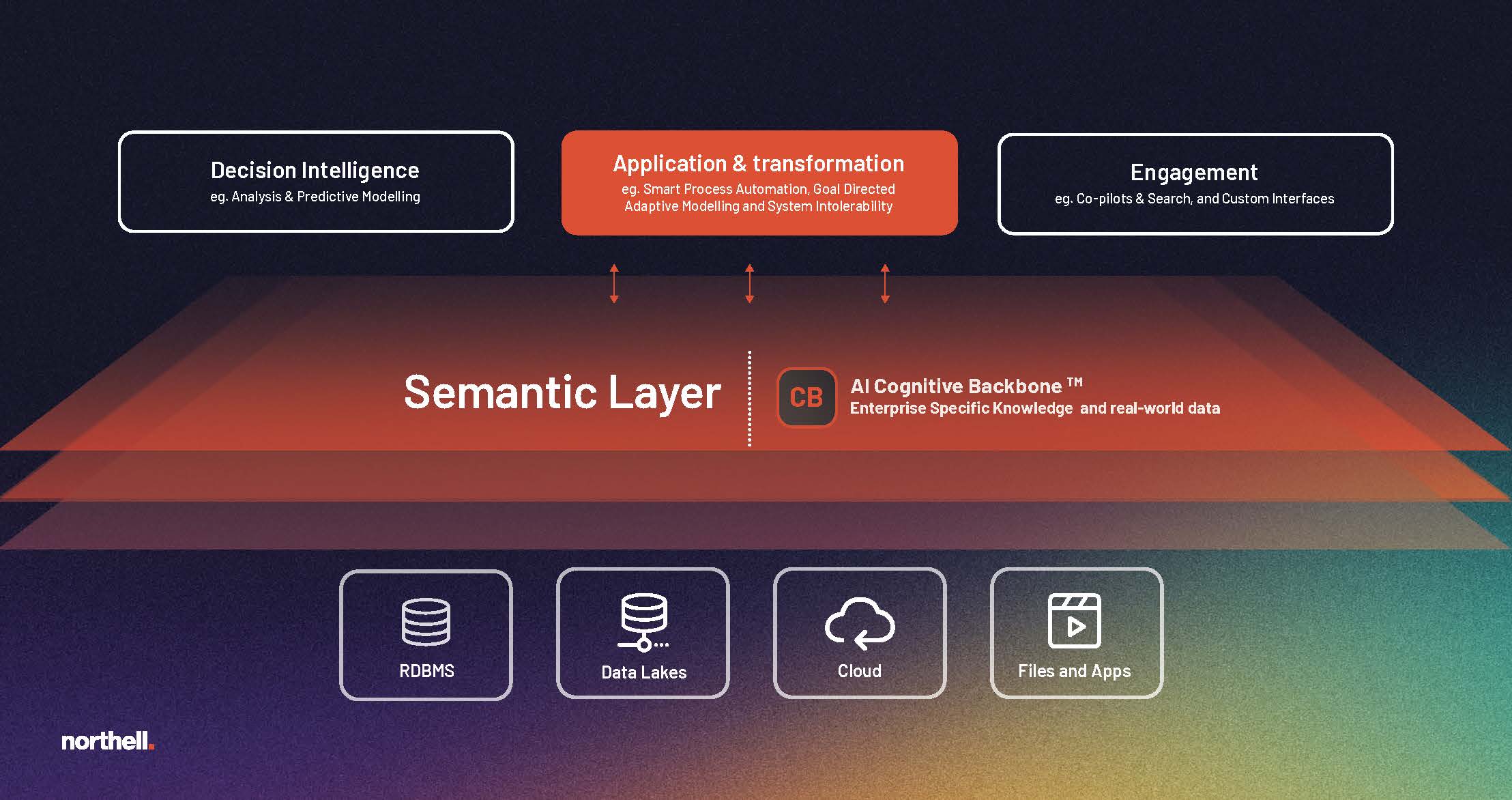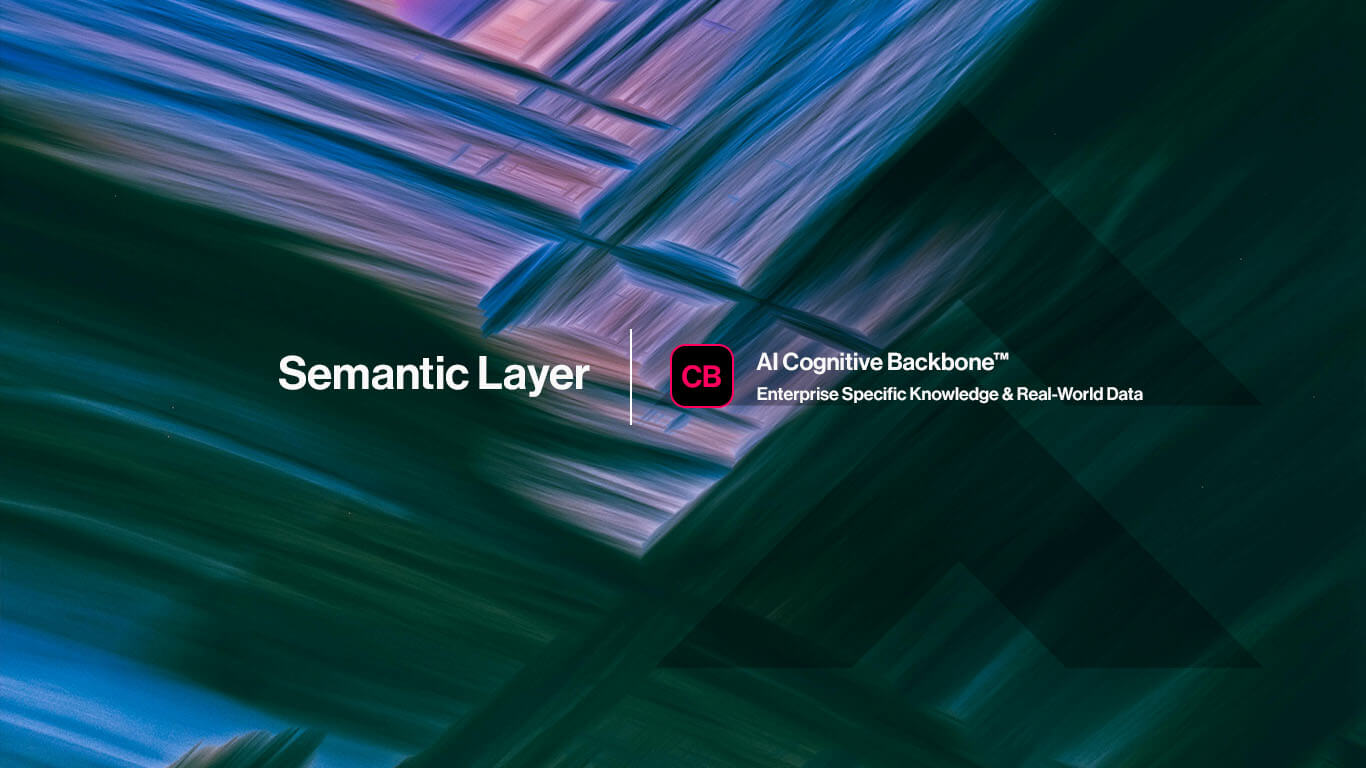Harnessing the Potential of Your Data with a Semantic Layer
When you think of data, you think of an endless source of constantly evolving information. While on one hand it’s the singular greatest innovation of the past century, on the other, it presents the enormous challenge of organising it all and transforming it into a competitive advantage.
In your business, data is likely to be mastered and stored across multiple systems, warehouses and potentially even a data lake with a myriad of tables and data models. The result is disparate data restricting the production of actionable insight, ability to automate processes and other AI and machine learning processes to exploit your data assets.
Imagine if you could organise all that data into a single, coherent and consistent view of all your data, you’ll not only save on time and inefficiencies, but also create a resource that could be accessed simply with self-serve, and help extract the value from your data.
What is the Semantic Layer?
A semantic layer sits above your source and system data to represent it in a unified, easy-to-use format. Effectively, it transforms all the data stored in the tens, or even hundreds of your systems and data warehouses into a new, single data model for the entire business, removing the need to translate data from different systems.

Data is traditionally organised into tables with technical descriptions and terminology. In a semantic layer its organised by business meaning, clearly defining the data in a way your team will be familiar with, such as customers and product. This fundamental difference enables more of your teams to self-serve using natural language searches (think a ChatGPT style interaction) rather than needing specialist data extraction skills and techniques.
It also breaks free of tables with rigid column and row definitions. These have never represented how human beings think, so have been difficult to understand and limit how data is linked and used. But with a semantic layer, data is organised into objects and logical relationships, identifying new relationships between data points and making data inferences if data is missing – both extremely valuable insights.
The Benefits of a Semantic Layer
An essential platform for any business, the transformation of your data’s columns into concepts presents ample benefits, such as:
- Unify all of your data, without modifying it
For a 360° view and opportunity for insights and automation. This is key to achieving the best results in insights and automation.
- Consistent format and meaning
For data that’s easy and quick to use. This removes the need for time consuming transformation processes, as well as allowing for AI automation
- Normal, accessible language
For democratised data and self-serviced needs. This means anyone from your team can access it, without the need for specialist data skills or knowledge on data models
- Scalability
For dynamic business and operating models moving into new territories and accommodating new data sources. This can evolve as your business develops unlike a relational database that is pre defined and fixed.
- AI
Creates a platform for developing and operating AI applications, futureproofing your business and putting it at the cutting-edge of data automation.
But that’s just the start.
In summary, a semantic layer is a critical component that bridges the gap between raw data and its limitless potential. This is a game changing opportunity to solidify the connection between your data warehouses and lakes – such that the downsides of semantic connections are rewritten – and leverage the new semantic layer to transform whole elements of your operation, develop new products, identify new possibilities, and make precise decisions.
This is the holy grail of solutions for your business’ data. Let’s get into it.
Deeper into the Semantic Layer
At Northell, we understand the importance of a semantic layer and share our knowledge by helping businesses implement their own. No business is the same, so there can often be a variety of challenges that need addressing. But we have so far proven that a semantic layer can be a versatile tool in fulfilling a range of business needs:
- Automation of various marketing processes, for example the marketing brief process. This helps increase efficiency, improve the quality of outputs and increase the speed of activating marketing campaigns.
- Development of analytical models that identify cost drivers to then automate the completion of RFPs for procurement companies.
- Automation of data capture from digital assets by combining with computer vision technology and enrichment through linking with a semantic layer.
- Development of predictive analytics and demand forecasting for the hospitality industry by combining internal and external data sources with easy to use front ends.
- Building a sales platform with automated marketing and customer service capability.
So how do we do it? Semantic layers operate between storage and compute layers. And while they’re not a new concept, Universal Semantic Layers are a new way of translating meaning from databases using knowledge graphs. As well as these, to create a semantic layer, we use:
- Ontologies – Define the concepts, categories and relationships within a particular data domain. They are the backbone of a semantic layer.
- Schema – Classify and organize data within the semantic layer, providing a structured approach to data categorisation and linkage.
- Information Extraction Pipeline – Extracting relevant data and its semantic meaning from various sources.
- Semantic Data Models – Representing data in a way that machines can interpret semantically. They enable the translation of complex data into a format that AI systems can process and understand.
- Reasoning Engine and Semantic Rules Engine – Perform logical reasoning, supporting AI systems in making informed decisions based on the underlying semantic data.
- Embedding Store – Store and retrieve the semantic embeddings that represent the meaning of data entities in a machine-readable format.
Your Partner for Reaching your Business’ Potential
In today’s data-driven landscape, the importance of a semantic layer cannot be overstated. When well constructed, it unlocks the true value of our data assets. At Northell, this isn’t a responsibility we take lightly, which is why our clients, including Genus, ITG and Haleon, have turned to us as credible experts to deliver on their expectations. Not only to streamline their data organisation and categorisation, but to also empower their AI systems and derive meaningful insights to make better informed decisions.
As we continue to strengthen our expertise in data, people and processes, we position ourselves at the forefront of leveraging data as a strategic asset, helping to drive sustainable growth for our clients and give them a competitive advantage over their competitors.
If you’re ready to see what we can do for your business, please get in touch.
